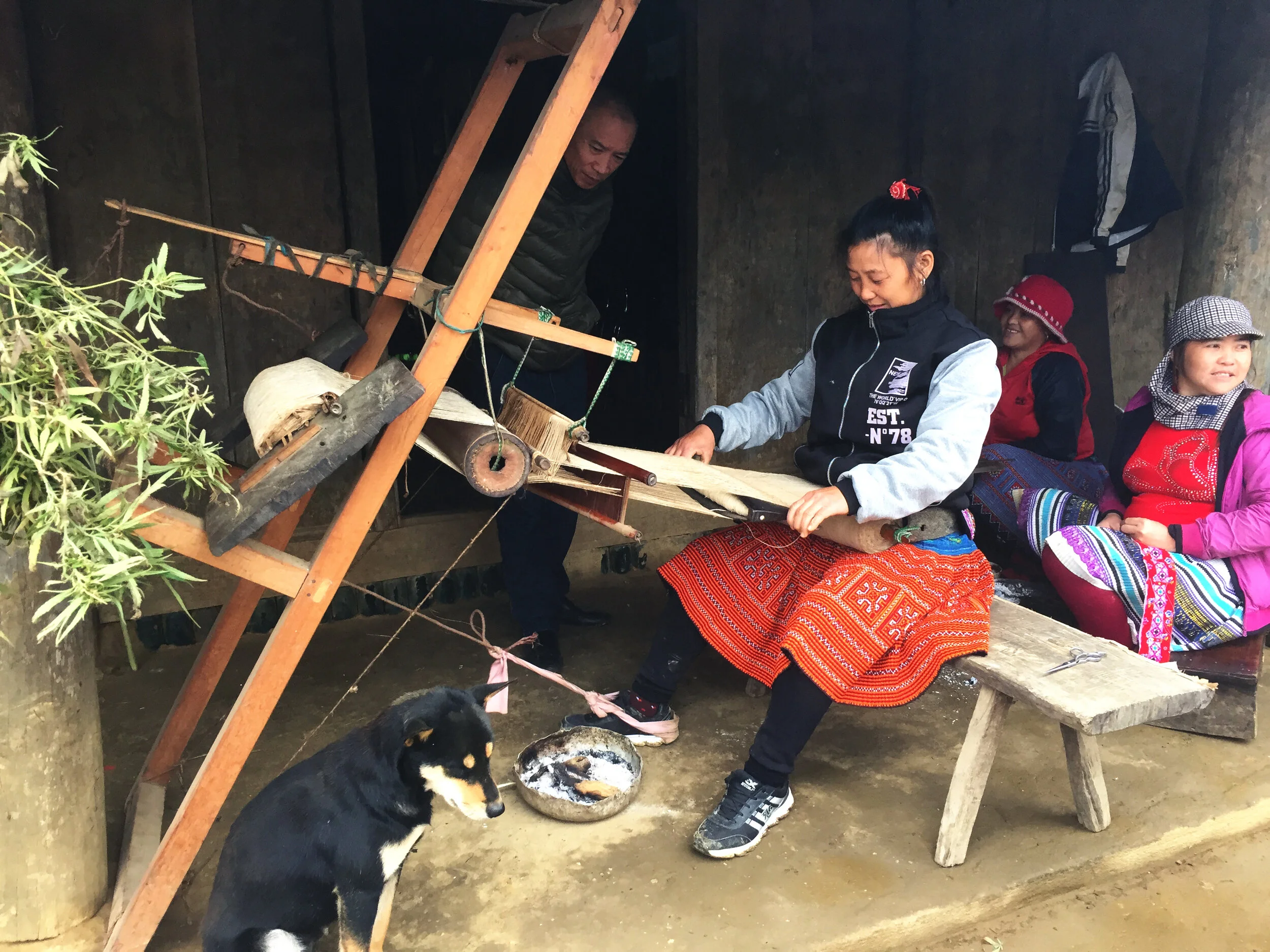The Blue Hmong of Pa Co Village, Hoa Binh, Vietnam
The Blue Hmong are one of 54 ethnic minority groups in Vietnam. A subgroup of the Miao people, the majority of whom live in China, the Blue Hmong are renowned for their decorative indigo Batik textiles that are often adorned with patchwork, cross-stitch and applique.
Traditional textile making is a domestic affair and a source of supplementary income for these families, besides agriculture and farming. Hmong men perform most of the physically demanding work such as felling trees, constructing houses and transporting the harvest; whereas Hmong women and older girls hold the responsibility for food preparation, household chores, and clothing and textile production. Made in between working on household chores, textiles decorated with batik, cross-stitch and applique are deeply ingrained in the lives of Blue Hmong women who grow up with the tradition. Indigo and hemp plants are also grown in their backyards alongside other crops for the production of hand-woven hemp fabric. Given the ad-hoc nature of batik making in these tribal regions, the spinning wheels, weaving looms and other tools for batik textile-making largely tend to be homemade, improvised equipment.
Pa Co is a Blue Hmong majority village situated high in the hills at an altitude of 1500m in the beautiful Mai Chau valley in Hoa Binh, 150km west of Hanoi. The Pa Co weekly market is a visual feast of textiles, costumes and haberdashery. Every Sunday, villagers gather when the market is still covered in dense fog to buy and sell daily produce and livestock as well as textiles and clothing. Interestingly, the ready-made pleated Hmong skirts on sale at the market are now largely printed polyester imports from China, not the traditional ones fashioned from hemp. Few stalls carry handmade batik textiles, with most of the handmade goods limited to applique haberdashery and rolls of hand-woven hemp fabric.
Textile Linker is a Vietnamese initiative that offers batik painting and indigo dyeing workshop alongside Blue Hmong artisans in Pa Co.
Explore more about Hmong and Miao batik with the Profile of Zu Xiong, Master of Hmong Batik, Laos and Profile of Yang Miu Zi, Master of Miao Batik and Hundred Bird Costume, China, or see a historical collection in our Visit to Scholar Yang Wen Bin in Guizhou, China.












